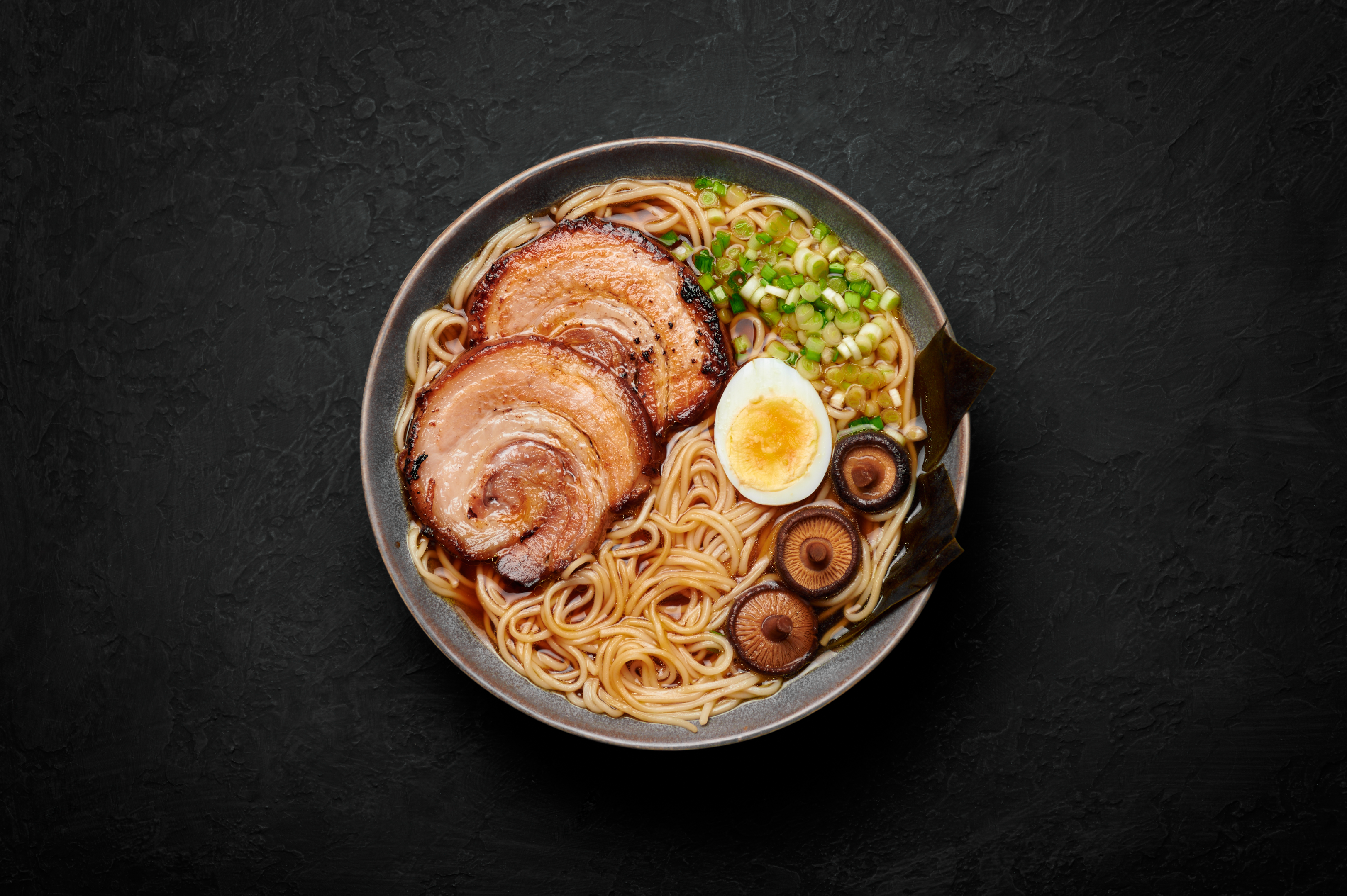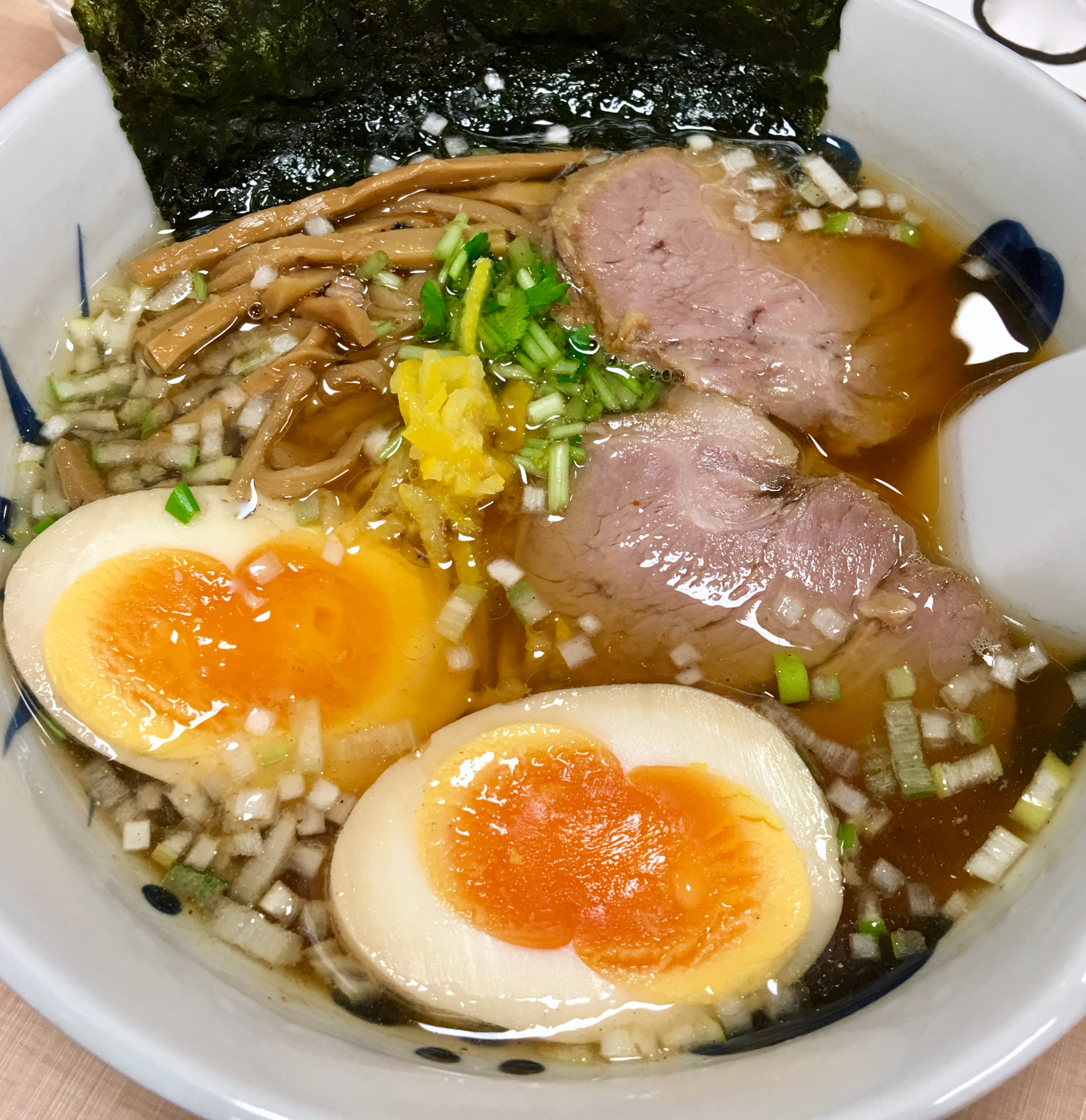Ramen soup is a beloved Japanese dish that has gained popularity all over the world. It is a comforting, flavorful, and satisfying meal that can warm you up on a cold day or soothe your soul when you need some comfort food. Ramen soup consists of four essential components: broth, noodles, toppings, and seasoning. Each element is crucial to the dish, but the broth is undoubtedly the heart and soul of ramen soup. In this article, we’ll delve into the world of ramen broths, exploring the different types of broths and their unique characteristics.

Shoyu Ramen
Shoyu ramen is one of the most popular types of ramen soup broths. It is a soy sauce-based broth that is made by simmering chicken or pork bones, vegetables, and aromatics for several hours. The soy sauce gives the broth its distinctive umami flavor, while the chicken or pork bones provide a rich, savory taste. Shoyu ramen is typically topped with bean sprouts, soft-boiled eggs, pork belly, and ground pork. It is a classic dish that is often served in Tokyo-style ramen shops.

Miso Ramen
Miso ramen is another popular type of ramen soup broth. It is a fermented soybean paste-based broth that originated in Hokkaido, Japan. Miso paste is added to the broth to give it a unique, complex flavor that is both salty and slightly sweet. Miso ramen is typically made with a chicken or pork bone broth base, and it is often topped with corn, bamboo shoots, and green onions. This hearty and satisfying soup is a favorite among ramen lovers.

Ramen Noodles
Ramen noodles are another essential component of ramen soup. They come in various shapes and sizes, and each type of noodle has its unique texture and flavor. Thin noodles are typically used in Tokyo-style ramen, while thick, chewy noodles are favored in Hakata-style ramen. Sapporo ramen, on the other hand, is known for its curly, medium-thick noodles. No matter what type of noodle you prefer, the texture of the noodle can greatly impact the overall experience of the ramen soup.

Soy Sauce
Soy sauce is a ubiquitous ingredient in Japanese cuisine, and it plays a vital role in the flavor profile of many ramen broths. Soy sauce is made by fermenting soybeans, wheat, salt, and water, and it has a rich, savory, and slightly sweet taste. It is often used to season and flavor ramen broths, and it adds a distinct umami flavor to the soup. Many ramen shops use different types of soy sauce to create their unique broth, and the type of soy sauce used can greatly impact the taste of the ramen soup.
Shio Ramen
Shio ramen is a salt-based ramen soup that is light and refreshing. The broth is made by simmering chicken or pork bones, vegetables, and salt for several hours. The result is a clear, flavorful broth that is perfect for those who prefer a lighter soup. Shio ramen is often topped with bamboo shoots, seaweed, and green onions, and it is typically served with thin noodles.

Tonkotsu Ramen
Tonkotsu ramen is a pork bone-based ramen soup that originated in Hakata, Japan. The broth is made by simmering pork bones for several hours until the marrow is released, creating a thick, creamy broth. Tonkotsu broth has a rich, savory taste that is often described as “meaty.” Tonkotsu ramen is typically topped with pork belly and can be served with thin or thick noodles. This hearty soup is popular in many ramen shops around the world.

Chicken Broth
While pork bone broth is the most common base for ramen soup, chicken broth is also used in some varieties. Chicken broth has a lighter flavor profile than pork bone broth and is often used to make shio ramen or chicken-based ramen soups. The broth is made by simmering chicken bones, vegetables, and aromatics for several hours until a rich, flavorful broth is created. Chicken broth can be used to create a lighter and more refreshing ramen soup.
Soft Boiled Eggs
Soft boiled eggs are a popular topping for ramen soup. They are typically cooked for around six minutes, resulting in a creamy, slightly runny yolk. Soft boiled eggs add richness and creaminess to the soup and are a favorite among ramen lovers. They are often marinated in soy sauce or mirin to add extra flavor.

Pork Belly
Pork belly is another popular topping for ramen soup. It is a fatty and flavorful cut of pork that is often braised or roasted before being added to the soup. Pork belly adds richness and umami flavor to the soup and pairs well with the other toppings and broth. It is often sliced thinly and arranged neatly on top of the soup.
Ground Pork
Ground pork is another common topping for ramen soup. It is often seasoned with soy sauce, mirin, and other spices to add flavor to the dish. Ground pork adds texture and a meaty flavor to the soup and is often used in shoyu ramen or miso ramen.
Ramen Toppings
Ramen toppings can vary widely depending on the type of ramen soup being served. Some common toppings include bamboo shoots, green onions, seaweed, corn, mushrooms, and narutomaki, a type of fish cake. Toppings can be added to enhance the flavor and texture of the soup and to create a visually appealing dish.
Fermented Soybean Paste
Fermented soybean paste, also known as miso paste, is a crucial ingredient in miso ramen. It is made by fermenting soybeans and grains, and it has a complex flavor that is both salty and slightly sweet. Miso paste adds richness and depth to the broth and gives miso ramen its unique flavor profile.
Hakata Ramen
Hakata ramen is a type of tonkotsu ramen that originated in Hakata, Japan. It is known for its thick, chewy noodles and rich, creamy broth. The broth is made by simmering pork bones for several hours until the marrow is released, creating a thick, creamy broth. Hakata ramen is typically topped with sliced pork belly, green onions, and pickled ginger.

Tonkotsu Broth
Tonkotsu broth is a rich and creamy pork bone-based broth that is used in many types of ramen soup. The broth is made by simmering pork bones for several hours until the marrow is released, creating a thick, creamy broth. Tonkotsu broth has a rich, savory taste that is often described as “meaty” and is perfect for those who prefer a hearty and satisfying soup.
Ramen Shops
Ramen shops are an integral part of Japanese culture, and they can be found all over Japan and around the world. Ramen shops specialize in making delicious and authentic ramen soup, and they often have their unique recipes and techniques for creating the perfect broth. Ramen shops can range from small, hole-in-the-wall establishments to large, modern restaurants, and each has its unique charm.
Chewy Noodles
Chewy noodles are a hallmark of Hakata-style ramen. These noodles are made with a higher percentage of water and are kneaded and pulled for a longer time, resulting in a firm and chewy texture. They pair well with rich and savory tonkotsu broth and can hold up to hearty toppings like pork belly and ground pork.
Tokyo Ramen
Tokyo ramen is a popular style of ramen that originated in Tokyo, Japan. It is known for its clear and light broth, which is typically made with chicken or fish broth and flavored with soy sauce or salt. The noodles used in Tokyo ramen are thin and straight, and the soup is often topped with bamboo shoots, green onions, and slices of pork.
Thin Noodles
Thin noodles are commonly used in Tokyo-style ramen, as they pair well with the light and clear broth. They are made with a lower percentage of water and are kneaded and pulled for a shorter time than chewy noodles, resulting in a thinner and more delicate texture. Thin noodles are perfect for those who prefer a lighter and more refreshing ramen soup.
Thick Noodles
Thick noodles are typically used in Hakata-style ramen, as they pair well with the rich and creamy tonkotsu broth. They are made with a higher percentage of water and are kneaded and pulled for a longer time than thin noodles, resulting in a firm and chewy texture. Thick noodles are perfect for those who prefer a heartier and more satisfying ramen soup.

In conclusion, ramen soup broths are a crucial component of the beloved Japanese dish. Each type of broth has its unique flavor profile, and the toppings and noodles used can further enhance the taste and texture of the soup. Whether you prefer the rich and savory tonkotsu broth or the light and refreshing shio ramen, there is a ramen soup out there for everyone. So next time you visit a ramen shop, take a moment to appreciate the complexity and artistry that goes into creating a delicious bowl of ramen soup.